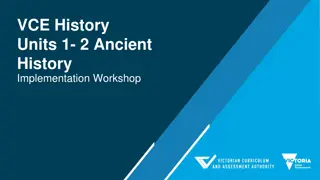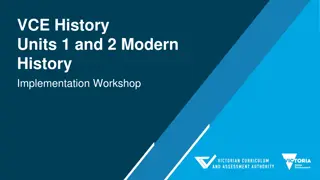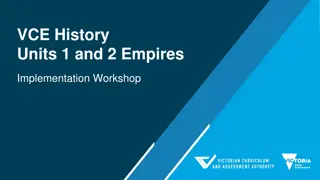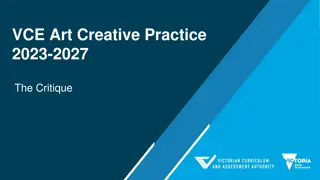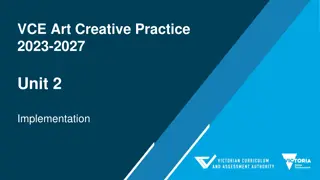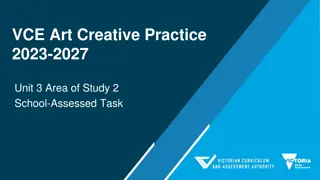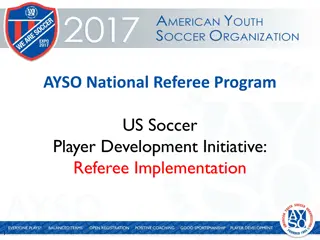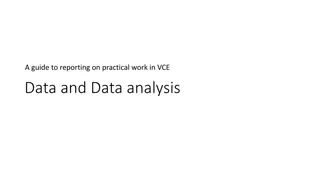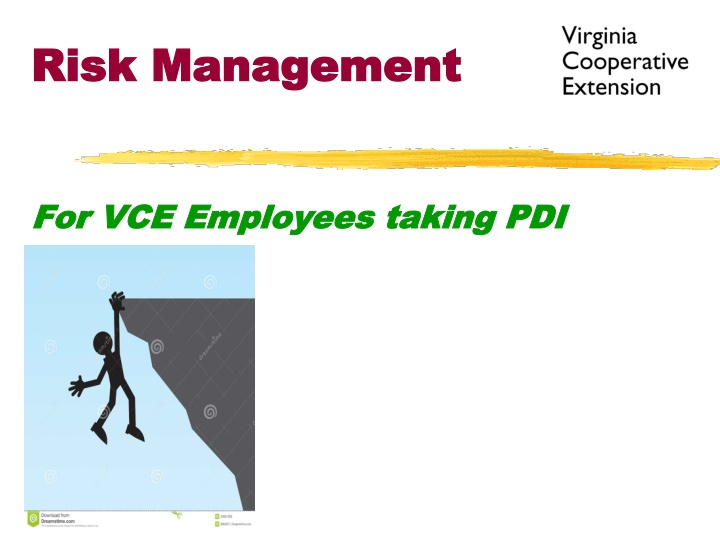
Risk Management for VCE Employees
Explore the importance of risk management, including defining risk, risk exposure, liability types, negligence, and the risk management process. Learn how to handle risks effectively in organizational settings to minimize losses and ensure safety.
Download Presentation

Please find below an Image/Link to download the presentation.
The content on the website is provided AS IS for your information and personal use only. It may not be sold, licensed, or shared on other websites without obtaining consent from the author. If you encounter any issues during the download, it is possible that the publisher has removed the file from their server.
You are allowed to download the files provided on this website for personal or commercial use, subject to the condition that they are used lawfully. All files are the property of their respective owners.
The content on the website is provided AS IS for your information and personal use only. It may not be sold, licensed, or shared on other websites without obtaining consent from the author.
E N D
Presentation Transcript
Risk Management Risk Management For VCE Employees taking PDI For VCE Employees taking PDI
Risk Management? https://www.youtube.com/watch?v=Askkt IDYe3A
Risky Programs- Activity What is the highest risk activity you have done in your career or have thought of doing?
What is Risk Management? Risk Management is defined as the process of 1.planning, 2.organizing, 3.leading and 4.controlling the resources of an organization in order to minimize the adverse affects of an accidental loss on that organization at a reasonable cost.
Risk Management Process Evaluate Exposure to Risk Identify Techniques for Handling Risk Implement Techniques Evaluate and Adjust
What is a Risk? Simply put, Risk is the CHANCE OF LOSS,
Risk Exposure 1. Liability 2. Personnel 3. Property 4. Net Income
LIABILITY Liability is synonymous with responsibility. Must be aware of your responsibility as it relates to liability when planning programs.
LIABILITY There are two types of liability: Criminal Civil otwo types: Contractual Tort many types, including Intentional wrong Unintentional wrong
NEGLIGENCE Negligence Failure to do- or not to do- what a reasonable or prudent person would have done in the same or similar situation In order to prove the negligence of another person, the following four elements must be present in the situation.
NEGLIGENCE Four elements of negligence 1.Duty owed 2.Duty Breached 3.Actual Damages 4.Proximate Cause
ELEMENT #1 Existence of a legal duty to protect the injured party from reasonable risks of harm that can be reasonably foreseen. You need to recognize when you have duty of care for other individuals.
ELEMENT #2 A failure to perform that duty of care. Ignorance and inexperience are no excuse. Inability to perform will eventually lead to problems. You should be aware of the risks associated with your activities, anticipate problems, and plan and follow ways to make your activities safe for everyone involved.
ELEMENT #3 An injury suffered by the claimant (person filing the claim). Injury may be physical, mental or property. An accident or injury must occur in order for you to be liable.
ELEMENT #4 A reasonably close causal relationship between the breach of duty and the claimant s injury. It must be proved that what you did or failed to do is the reason for the accident or injury.
ACTIVITY Is it Negligence??
Manage Risk Assume Reduce Avoidance Transfer
How do you Manage Risk? 1.from avoiding an activity altogether 2.to absorbing the risk and its related consequences as part of your normal operations. 3.insurance, 4.contractual transfer of the risk, 5.loss prevention through effective safety programs, 6.loss reduction through effective emergency response plans, 7.business recovery plans, 8.good staff training and 9.separation of buildings or functions, etc.
Manage Risk VCE Volunteer Screening Guidelines Volunteer Type Criminal Background Screening NO Occasional/ One-Time Volunteers 4-H Volunteers YES 4-H Camp Volunteers YES YES Master Volunteers YES Volunteers in Positions of Trust
BASIS FOR ALLEGATIONS OF NEGLIGENCE 6. Safety Procedures 1. Hiring or recruiting (staff or volunteers) 2. Emergency training 7. Inadequate Warnings 3. Supervision Ratios 8. Maintenance 4. Safe Transportation 9. Equipment 5. Equipment or Animals 10. Secondary Injury
Specific legal duties 1. PROPERLY PLAN THE ACTIVITY 6. PROVIDE PROPER EMERGENCY RESPONSE 2. PROVIDE PROPER INSTRUCTION 7. MAINTAIN ADEQUATE RECORDS 3. EXPLAIN THE INHERENT RISKS 8. PROVIDE CLOSE SUPERVISION 4. MONITOR FOR INJURY OR INCAPACITY 9. INSPECT, INSPECT, INSPECT 5. PROVIDE ADEQUATE, SAFE EQUIPMENT
Evaluating the Risks Planning for the Best and the Worst Be aware of the necessity to know the relevant safety procedures and plans Be alert to dangerous conditions Put overall administration into specific written procedures, such as do s and don ts for participants Ensure appropriate supervision and be clear on instructions regarding safety protocols for the activity Complete all necessary forms See the Planning for the Best and the Worst handout.
Evaluating Risk- Activity You have decided on a Program. Now you need to assess the Program for the risks associated with it.
ELEMENTS OF A RISK MANAGEMENT PLAN 1. Staffing/Supervision 2. Insurance Issues 3. Emergencies 4. Equipment 5. Facility
Staffing/Supervision A. Training B. Certification C. Age requirements/Experience D. Adult/youth ratio E. Specific requirements (ie: VIP process)
Insurance A. Waivers B. Health History/Parental Permission C. Liability/Vehicle Insurance D. Health Insurance E. Equipment Insurance F. Facility Insurance G. Leases
Insurance Insurance Types and Claims Forms Workman s compensation Not for volunteers Submit first report of injury immediately Automobile liability $2,000,000 per occurrence State-owned vehicles (does not cover personal vehicles) Authorized Drivers School Buses and Rental Cars General liability coverage $2,000,000 per occurrence (not including law violations) This is not American Income Life Property Full coverage (less a $1,000 deductible)
Who is insured Who is insured? Virginia Tech provides liability coverage to University employees and volunteers acting as agents of the University Remember- the coverage is for liability and not for injury to the employee or volunteer
American Income Life Special Activities Coverage Annual $1 coverage
Certificates of Insurance and Contracts Certificates-of-Insurance You may need to request a certificate-of-insurance from an individual or group that provides a program You may need to provide a certificate-of-insurance (from VT) to an individual or group that is involved in a program (make request to the VT Office of Risk Management Contracts Must be signed by authorized university representative (Associate Director) Field and District staff are not authorized to sign
Emergencies Procedures A. Transportation/Emergency Vehicle B. Communication/P.R. C. First Aid D. Parental Notification
Emergencies Separate Plan for each Situation * Range accident Lost Child Misfire * Rabid Animal * Flood/Fire/Tornado * Vehicle Accident * Other areas as specific to your activity
Blood-borne Pathogens Definition: Exposure:
Blood-borne Pathogens First aid kit Wear gloves Wash hands/exposed skin Contact with eye or mucus membrane
Equipment A. Safety Check Procedures/Maintenance B. Handling C. Proper Storage D. Transportation E. Parental permission to Use
Facility A. Safety Inspection B. Safety Procedures (signage, berms, safety zones, lines, etc.) C. Insurance D. Leases
Plan - Activity You have identified the risks associated with your Program, now decide on how you will manage the risks!
Risk Management Process Evaluate Exposure to Risk Identify Techniques for Handling Risk Implement Techniques Evaluate and Adjust
Above Suspicion Policy Purpose To provide a safe and caring environment for youth and adults in all program situations To protect salaried and volunteer staff from accusations of abuse Avoid one-on-one situations by staying in groups of 3 at all times
Suspicion of Child Abuse Anyone involved in the education or care of children has the responsibility to report any allegation, accusation, or suspicion of child abuse Suspicion defined as reasonable cause to believe that an individual has been abused or neglected Report to your local Social Services Department Toll-free child abuse/neglect hotline (1-800-552- 7096) Confidential, and if there is doubt, call!
Incident - Activity Uh oh! You have had an incident at your Program! Now what?
In the Event of an Incident... Use the Accident/Incident Form to document everything; include facts only Submit the Accident / Incident Report for: personal injuries or accidents to participants or volunteers serious injuries (fractures, injuries involving sutures, injuries requiring a hospital stay, etc.) You don t need the form for minor injuries such as scrapes and bruises.
In the event of... serious multiple injuries, or fatalities, incidents that involve law enforcement, or incidents that may result in litigation ..follow the Emergency Procedures card guidelines
Emergency Cards The VCE Emergency Card outlines the procedures to be followed in the event of a serious accident or emergency Should be carried at all times by VCE staff and volunteers Can be ordered (publication # 490-101)
Example Card from VCE Front: Back:
Who and Where to get answers? Ellen S DouglasDirector Risk Management (0310) edouglas@vt.edu 540-231-7439 540-382-1799 Insurance & Risk Management (0310) North End Center, Suite 3300 300 Turner Street, NW Blacksburg, VA 24061 (540) 231-7439
Resources Risk Management Training for new employees , by Ellen Douglas http://www.intra.ext.vt.edu/policies/documents/riskmanag ement2010.ppt Risky Business by Richard A. Fultz, Kansas 4-H Shooting Sports P.A.T. volunteer http://w3.4- hshootingsports.org/risk_mgmt/Risky%20Business.pdf Risk Management for Virginia Master Naturalist Volunteers ppt


